Important Formulas: Functions | Quantitative for GMAT PDF Download
| Table of contents |

|
| Introduction |

|
| What is a Function? |

|
| Basic Methods of Representing Functions |

|
| Key Formulas & Properties for Functions |

|
Introduction
Functions are fundamental in modeling real-life relationships in business, economics, and analytics. For example, a profit function can relate the quantity of goods sold to total profit, aiding in decision-making and forecasting. Understanding functions is crucial for data analysis, optimization, and interpreting business scenarios.
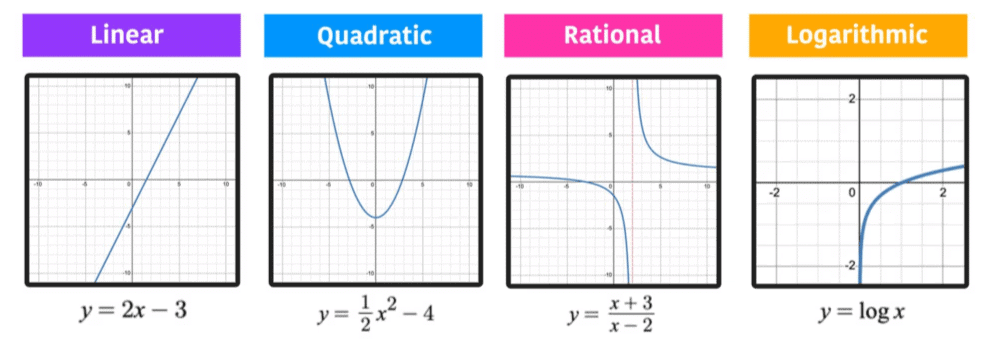
What is a Function?
A function is a clear relationship between two sets:
Domain (X): The set of all possible input values.
Codomain (Y): The set of all possible output values.
A function f: X → Y assigns each element in X to exactly one element in Y.
Independent variable (x): Input value.
Dependent variable (y = f(x)): Output value.
Basic Methods of Representing Functions
1. Analytical Representation
A function is expressed using a formula:
Single formula: y = 3x²
Piecewise formula:

2. Graphical Representation
A function is plotted on the x-y plane, where each point (x, y) corresponds to (x, f(x)).
Example: Graph of f(x) = x² for X = {-3, -1, 1, 3}.
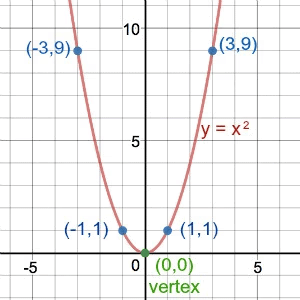
3. Tabular Representation
A table lists x and corresponding y = f(x) values.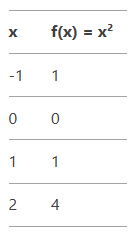
Key Formulas & Properties for Functions
1. Even Functions
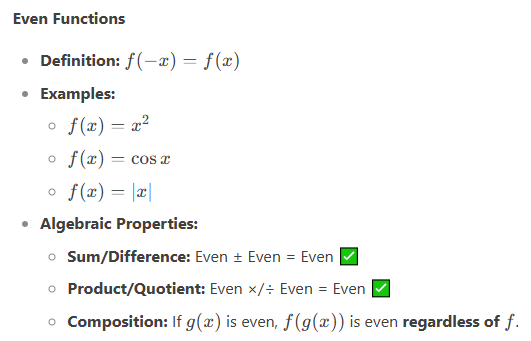
2. Odd Functions
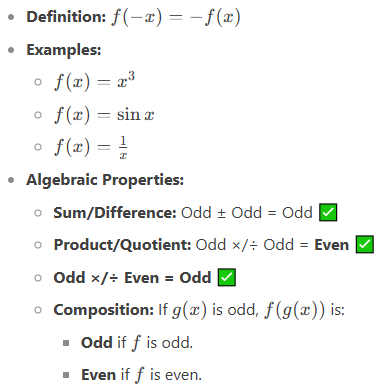
3. Neither Even Nor Odd

4. Identity Function
Defined as f(x) = x.
Graph is a straight line at 45° passing through the origin.
5. Absolute Value Function
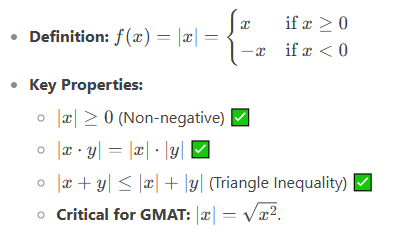
6. Exponential Function
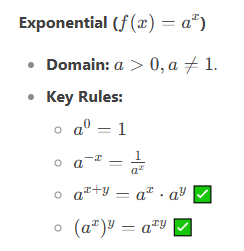
7. Logarithmic Function
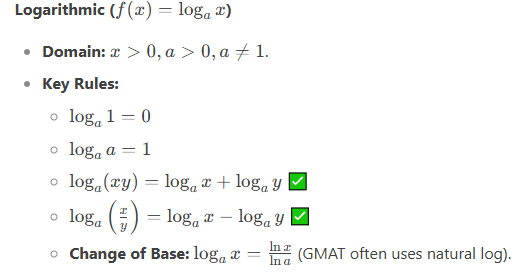
8. Greatest Integer (Floor) Function
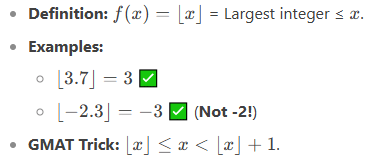
9. Function Transformations (Critical for GMAT)
Vertical Shifts
f(x)+c → Up by c ✅
f(x)−c → Down by c ✅
Horizontal Shifts
f(x+c) → Left by c ✅
f(x−c) → Right by c ✅
Reflections
−f(x) → Reflects over x-axis ✅
f(−x) → Reflects over y-axis ✅
Absolute Value Transformation
∣f(x)∣ → Negative parts flip above x-axis ✅
10. Quadratic Functions
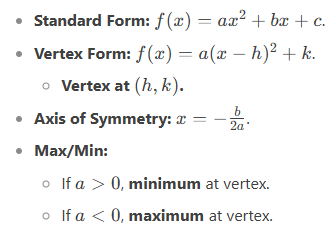
|
127 videos|154 docs|111 tests
|
FAQs on Important Formulas: Functions - Quantitative for GMAT
| 1. What is a function in mathematics? |  |
| 2. What are the basic methods of representing functions? |  |
| 3. What are some key properties of functions? |  |
| 4. What are some important formulas related to functions? |  |
| 5. How can understanding functions help in preparing for exams like the CAT? |  |















